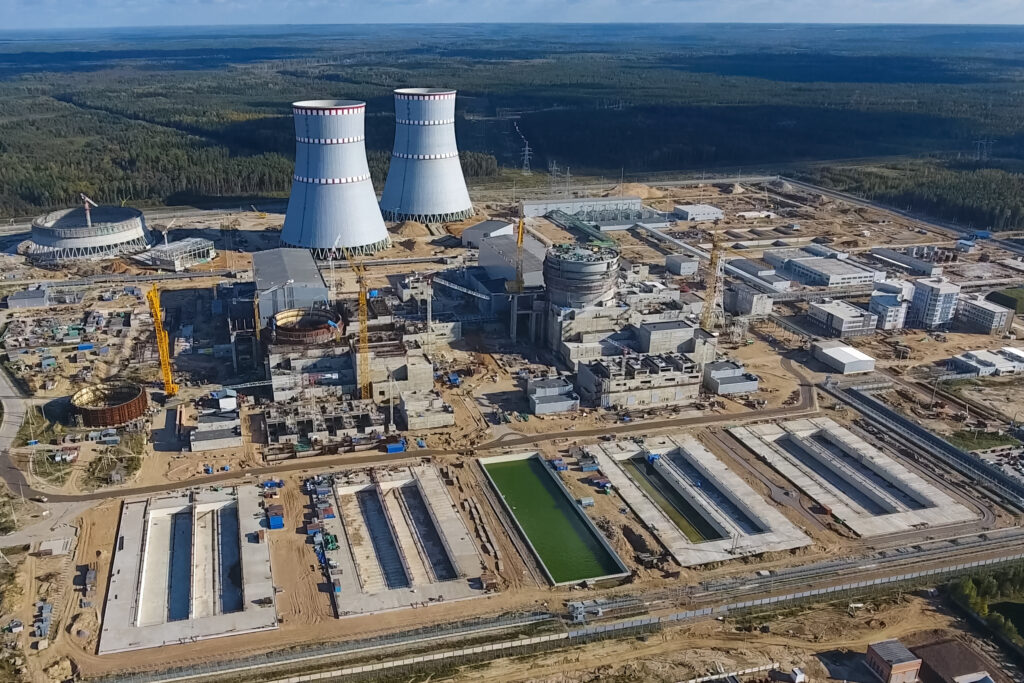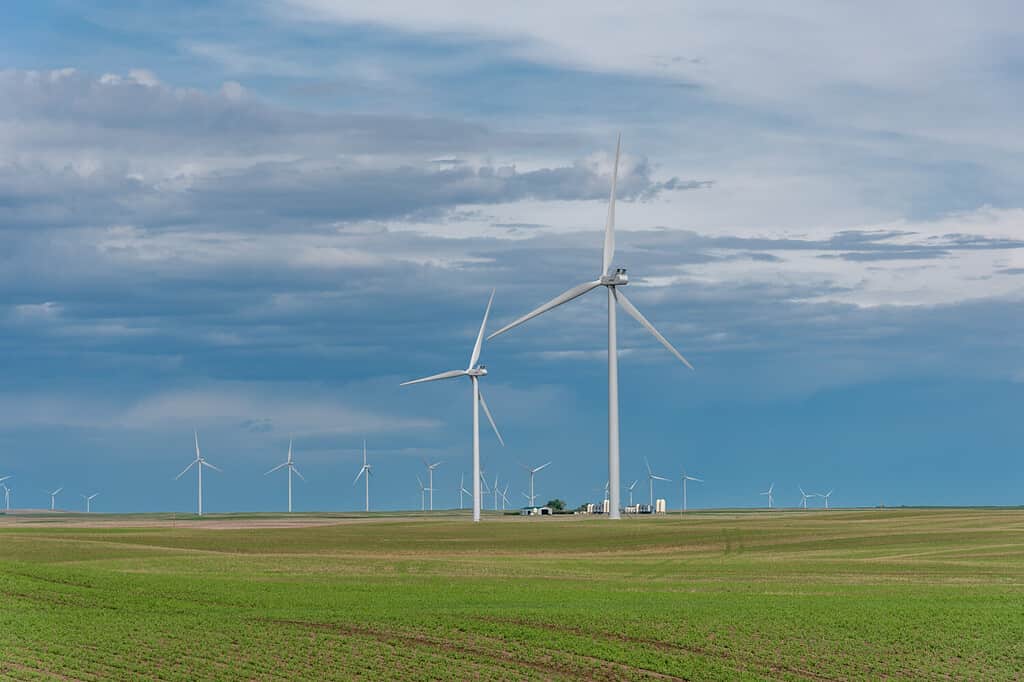California is a state with a lot. A lot of people, a lot of coastline, and a lot of land. Because of all that, however, it also has a lot of power needs. In fact, California comes in second place for overall electricity usage. It sits behind only Texas, the state famous for being the biggest at everything it does (apparently at the cost of efficiency). Electricity comes from a few places, and California has a diverse ecosystem of power generation. Let’s take a look at one of those methods specifically: nuclear power. Today, we will discover the two nuclear power plants in California and how they impact the state’s power economy overall. Let’s get started.
The Two Nuclear Power Plants in California

The Diablo Canyon Nuclear Power Plant is the largest nuclear power plant in California.
©Doc Searls from Santa Barbara, USA/CC BY-SA 2.0 – Original / License
There are two power plants in California, although only one is currently active; the other power plant began a decommissioning process a few years ago. Let’s look at each of these plants, how much energy they produce(d), and where they are located.
Diablo Canyon Power Plant
The Diablo Canyon Power Plant is located on the coast of San Luis Obispo County between San Francisco and Los Angeles. Right now, it is the state’s last operating nuclear plant but also its largest source of carbon-free electricity.
The plant is broken into sections, with two pressurized water reactors that produce 2,240 megawatts of power together. Incredibly, they can generate enough power for over 3 million people, or nearly 3% of California’s entire population. Some reports even say that they produce 9% of the required power for the state, all but themselves.
The plant began operating in 1985, but the road to its opening came with pushback and lawsuits over its potential environmental impact (these disputes still exist today). Pacific Gas & Electric (PG&E), the largest energy supplier across the state, owns the plant. The plant’s license is set to expire in 2024 and 2025 for the two reactors. However, there is some political action that may change things.
In 2016, PG&E announced that it would not renew its license and planned to close the plant by 2025. Numerous political and environmental groups also pressed for its closure. California Governor Gavin Newsom announced that would seek federal funding to keep the plant open for another five years. His main concern is the grid can’t handle such a loss in a situation already impacted by extreme weather and other factors. He believes Diablo Canyon should operate until 2030 to protect against possible blackouts.
San Onofre Nuclear Generating Station
The second plant in California is the San Onofre Nuclear Generating Station (nicely abbreviated “SONGS”), which is on the coast of San Diego County. It was the state’s second operating nuclear plant until it was permanently shut down in 2013. The plant closed due to a series of technical problems and safety issues that would have been very costly to fix. It had two reactors that produced a combined 2,200 megawatts of electricity.
There is quite a bit of history with this plant. It originally started operating in 1968 and ran until the first reactor was retired in 1992. It was owned by Southern California Edison (SCE), San Diego Gas & Electric (SDG&E), and also the city of Riverside. The plant’s license was set to expire in 2022 for both reactors, although it started its decommissioning process before then.
In 2012, the entire plant was taken offline after a leak was detected in one of the steam generators. Testing shows that the generators, which had already been replaced in 2010 and 2011, had some quite serious design flaws. Essentially, they were prematurely wearing, causing damage to hundreds of the tubes. It was then decided to retire the plant in 2013, especially with the high cost that would come with replacing the generators. Currently, the plant is undergoing “decommissioning,” a process that is expected to take at least 15 years and cost $5.1 billion.
Why Does It Cost Money to Decommission Nuclear Plants?

Nuclear power plants can be very expensive to decommission, sometimes taking billions of dollars.
©hlopex/Shutterstock.com
A whole lot of the political and environmental pressure surrounding nuclear plants is due to the decommissioning process of the plants themselves. They are extremely safe, but the process is still expensive and has the potential for danger.
This is all because these plants are not like other power plants that can be easily shut down and dismantled. Essentially, the radioactive materials used to generate power remain radioactive for thousands of years, and the entire time they are radioactive, they pose a threat to humans. This means that decommissioning nuclear plants involves several steps, and as always, steps cost money. The San Onofre plant, for reference, is already over a billion over its estimated decommissioning budget. Here’s why it can take so much to shut down a power plant:
Recycling
Some of the used fuel from nuclear reactors can be recycled to generate more electricity, but not everyone is currently doing this. The process can help lower waste and save natural resources, but it also requires special facilities that can cost extra money. In many places, counties just throw this waste away instead of investing in recycling technology. Unfortunately, the United States doesn’t recycle nuclear waste, but countries like Japan and France do.
Storage or Disposal
Some of the used fuel and other waste cannot be recycled and need to be stored until it becomes less radioactive. In some cases, this can, quite literally, take thousands of years. These storage locations are often deep underground or inside mountains and are filled with specialized containers that minimize leaking while also letting them break down.
This process is called “deep geological disposal” and is usually considered to be the best solution for high-level waste. Still, these solutions are very expensive and take time to build, manage, and monitor.
According to the U.S. Energy Information Administration, the cost of decommissioning a nuclear plant can range from $280 million to $612 million, which shows just how over budget the San Onofre Plant is. Nuclear plant operators are required to set aside funds for decommissioning during their operation. In some cases, these funds aren’t enough to cover the full expenses of things (whether by accident or on purpose).
The Future of Energy in California

Wind, geothermal, hydroelectric, and solar are all examples of renewable energy sources that California is moving towards.
©Jeff Whyte/Shutterstock.com
While nuclear power is declining in the state, there is still a plan in place to make things greener than ever before and reduce reliance on fossil fuels. California is a pioneer in green energy and climate action when compared to many other states. The state wants to use 100 percent clean and carbon-free electricity by 2045. Here’s how it’s supposed to work:
- Electrify everything
- California wants to switch from fossil fuels to electricity for as many applications as it can, including driving, heating, cooling, and construction.
- Use more renewables
- California wants to generate more electricity from renewable sources. A renewable source is something that won’t run out and includes things like sun, wind, geothermal, and hydroelectric sources. These sources are clean, abundant, and cheap, plus creating the infrastructure for them creates jobs!
- Energy storage
- Part of the balance of using these new sources is the ability to store energy when not in use. This will balance the supply and demand of electricity more easily. For example, when the sun sets, solar energy that is unused will still be usable since the excess can be stored.
- Reliability
- For a final element, creating reliable grid systems is also paramount. These sources can include existing power plants that run on natural gas or nuclear fuel until cleaner alternatives replace them. Something that can be turned on and off with ease as demand requires (one of the best things about coal and other carbon-based methods) is what makes them so useful, so replacing these sources is important.
Thank you for reading! Have some feedback for us? Contact the AZ Animals editorial team.








